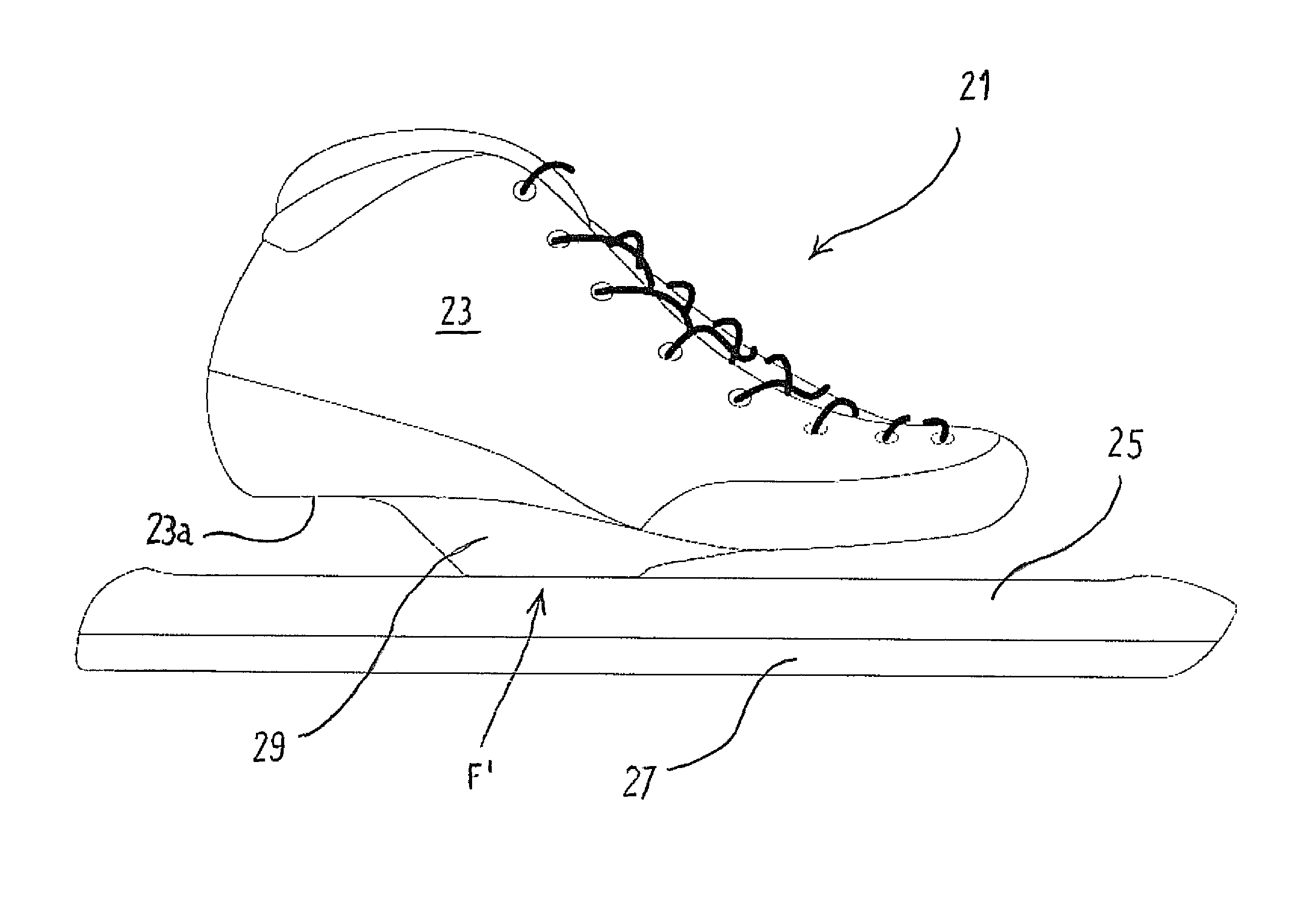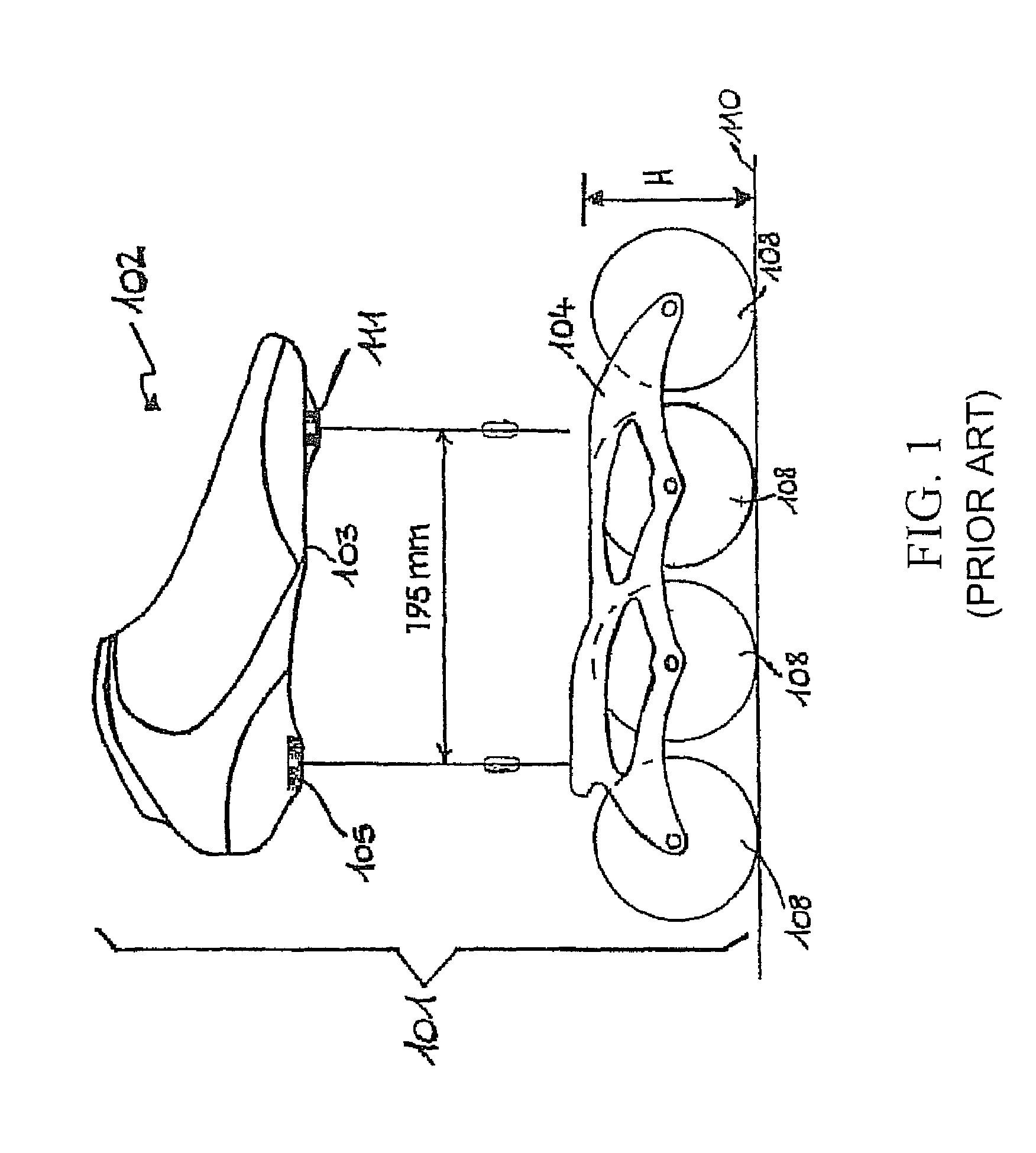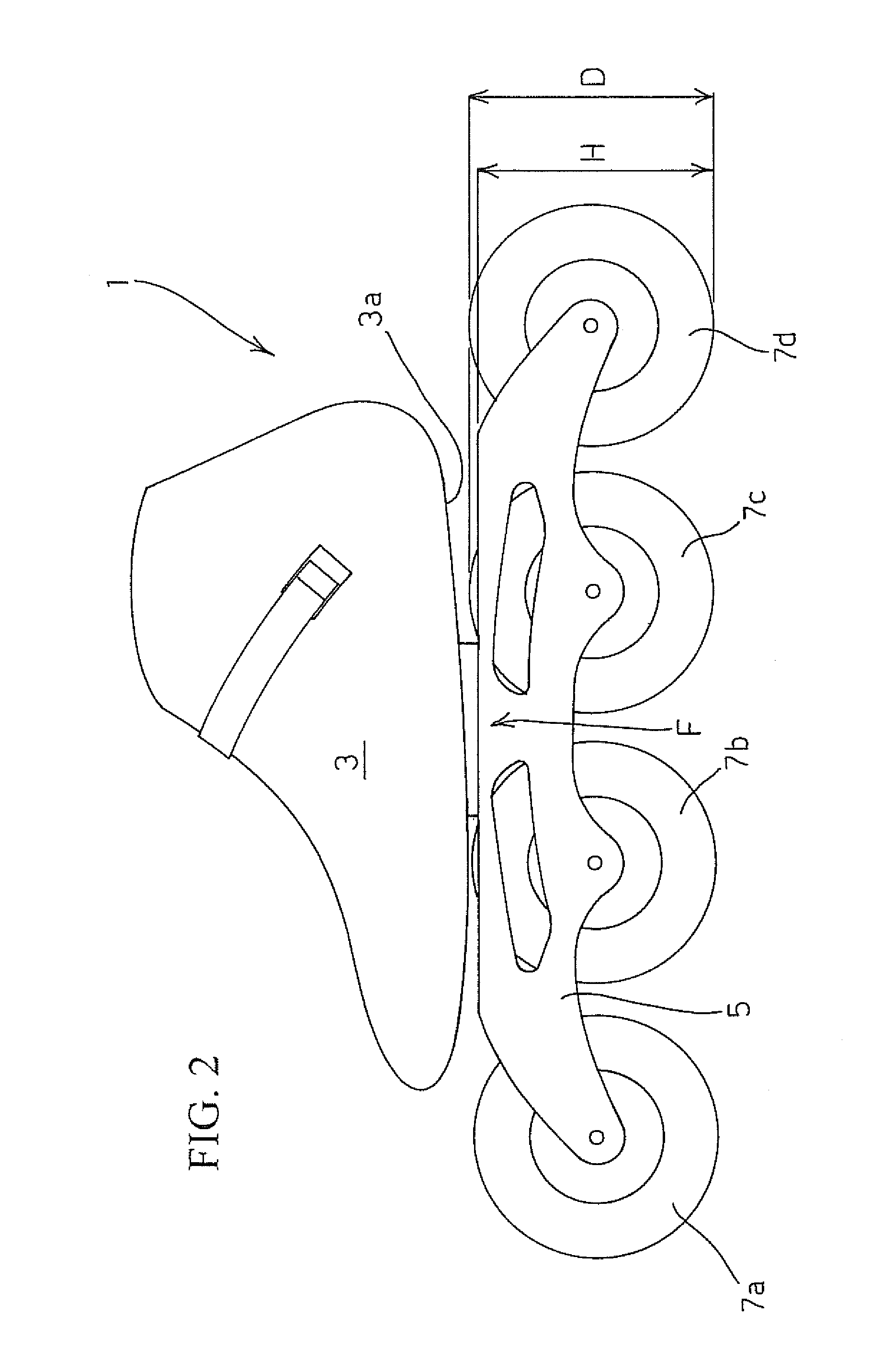Skate
a technology of roller skates and skates, applied in the field of roller skates, can solve the problems of reducing the thrust power efficiency, reducing the stability of the skate, and reducing so as to reduce the stiffness, avoid the effect of deteriorating the flexibility of the skate blade, and easy to follow
- Summary
- Abstract
- Description
- Claims
- Application Information
AI Technical Summary
Benefits of technology
Problems solved by technology
Method used
Image
Examples
Embodiment Construction
[0041]With reference to FIGS. 2 to 5, the in-line roller skate 1 according to the invention comprises a frame 5 including a pair of side frame elements 5a,5b, joined to each other by at least one transversal frame element 5c, wherein said frame elements can be made of metal, for instance aluminium, and said side frame elements 5a,5b are preferably made as perforated, shaped plates.
[0042]A front wheel 7a, a rear wheel 7b and one or more (two in the illustrated embodiment) intermediate wheels 7b,7c are pivotally mounted between said side frame elements 5a,5b, said wheels being arranged in-line and preferably all having the same diameter D.
[0043]A skate boot 3 provided with a sole 3a and suitable to be worn by the user of the skate 1 is fastened to said frame 5 through a fastening portion F.
[0044]According to the invention, said fastening portion F is fastened to the frame 5 at a region F that is substantially central in the longitudinal direction between the front wheel 7a and the rea...
PUM
 Login to View More
Login to View More Abstract
Description
Claims
Application Information
 Login to View More
Login to View More - R&D
- Intellectual Property
- Life Sciences
- Materials
- Tech Scout
- Unparalleled Data Quality
- Higher Quality Content
- 60% Fewer Hallucinations
Browse by: Latest US Patents, China's latest patents, Technical Efficacy Thesaurus, Application Domain, Technology Topic, Popular Technical Reports.
© 2025 PatSnap. All rights reserved.Legal|Privacy policy|Modern Slavery Act Transparency Statement|Sitemap|About US| Contact US: help@patsnap.com



